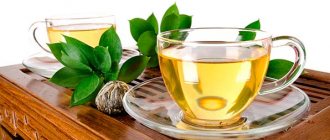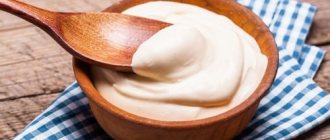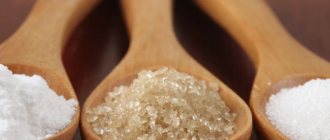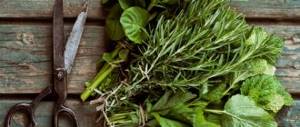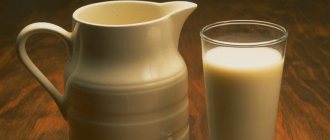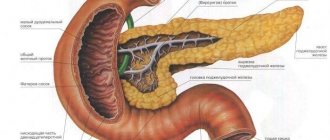Useful benefits of peas
It contains coarse fiber, which aggravates the functioning of the digestive system, which is completely undesirable for a sick pancreas. This is the main reason why peas should be present in limited quantities in the diet of a patient with pancreatitis.
However, it also contains other substances that are necessary for the human body:
- Microelements: potassium, selenium and magnesium, which have a beneficial effect on the working functions of the heart muscle and also prevent the formation of cancerous tumors.
- Protein is beneficial for the diseased gland and promotes its recovery.
- Nicotinic acid improves appetite and normalizes cholesterol levels in the blood fluid.
- Thiamine improves brain function.
This culture has increased energy value, that is, it satisfies hunger well, therefore it is useful for overweight people. It also has a varied taste, which is explained by the cultivation of its different varieties.
Peas and pancreatitis
Many nutritionists note the usefulness of this herbal product for pancreatitis and advise including it in the menu for this disease. However, it is strongly emphasized that in case of exacerbation of the acute or chronic form, peas and dishes made from them should not be consumed. Otherwise, even a small portion, such as soup, can provoke various complications.
If the doctor allows you to eat peas, you must adhere to the following rules:
- Eat dishes with peas separately, without mixing them with other foods.
- Comply with the daily drinking norm.
- Try not to overeat.
- Control the appearance of edema.
It is worth emphasizing that canned peas are much more nutritious than dried and fresh ones. It is even present in diet No. 5, which is recommended for acute and chronic manifestations of pathology, but again, canned peas should be eaten in moderation.
In acute illness
So, is it possible to eat pea soup for acute pancreatitis? According to doctors, this dish is not the best solution. The fact is that the protein in peas, as mentioned above, complicates the functioning of the gastrointestinal tract and glands, and also provokes other negative phenomena:
- Excessive diarrhea, provoked by a more active digestion process and a complication of already existing diarrhea.
- Bloating, which is observed in case of inadequate digestion of peas.
- Persistent and prolonged heartburn.
- Severe flatulence.
- Increased nausea.
- Excessive cleansing of the body, when even the substances it needs are removed from the body.
- Intense intestinal colic.
As you can see, peas can cause a relapse of pancreatitis, thereby worsening the patient’s condition. Therefore, pea soup and acute pancreatitis are absolutely incompatible things.
Chronic course of the disease
Many patients ask whether it is possible to have pea soup for pancreatitis when the disease is in stable and long-term dormancy? In this case, we can say the following: if a person feels well and does not exhibit negative symptoms, then the doctor may allow its use.
In order to check how loyally the gastrointestinal tract will accept pea soup, it is not necessary to cook it. It is better to check using other dishes in which this legume is present. For example, prepare vegetable puree from pumpkin, cauliflower, carrots and green peas. You can also go another way, for example, boil the peas, puree them and add them to already prepared vegetable soup.
If the gastrointestinal tract accepts such food without problems, and no negative consequences arise, you can try making soup. Pea soup for the pancreas should be cooked in accordance with the following instructions:
- Peas must be pre-soaked.
- Cook until completely boiled.
- You must add dill to pea soup.
If these points are carefully followed, the negative impact of peas on the entire digestive system is significantly reduced.
When the acute manifestation of the disease has decreased and a stable decline of symptoms is noted, and the patient’s well-being has improved, you can introduce young fresh peas into the menu, which do not need to be chopped, but must be soaked. In this case, use exclusively cold water, but not warm water, which can speed up the fermentation time.
These peas are added to a variety of salads, vinaigrettes and side dishes. Alternatively, it can be served stewed and baked, and you can also prepare puddings, casseroles and other similar dishes from it. It is used as a filling for rolls and pies, but make sure that the baking ingredients do not contain any products that are contraindicated for pathology.
Pea soup and features of its preparation
In the material, we found out that in case of pancreatitis, the consumption of peas and all dishes derived from this vegetable is strictly contraindicated. For chronic pancreatitis, this product is also not recommended for use, especially if, after taking it, a deterioration in the patient’s condition is detected. If a negative reaction is not detected, then you can eat pea soup, but first you need to prepare the dish correctly.
Before you start preparing a dish, it is important to carry out the initial steps:
- Pre-soak the peas to soften them. It is important to use only cold water for soaking, since it will quickly ferment in warm water.
- Achieve complete boiling, thereby destroying the fiber.
- After preparing the dish, you need to add dill to it. Dill reduces the likelihood of negative reactions when eating peas.
We also recommend viewing: Diseases in the gallbladder and pancreas: symptoms and treatment methods
Pea soup recipes for illness
So, pea soup for chronic pancreatitis can be prepared according to several recipes.
First recipe
- Peas (crushed) – 1 cup.
- Carrots – ½ piece.
- Purified water – 1.2 l
- Onion – 1 pc.
- Slice of loaf – 5-5 pcs.
- Potatoes – 2 pcs.
- Vegetable oil – 1 tsp.
- Bay leaf – 2 pcs.
- Dill and parsley - to taste.
- Salt – 0.5 pinch.
Preparation:
- Pour cool water over the peas and leave for 4-5 hours. During this time, it needs to be rinsed 3-4 times and refilled with cooled water.
- Then rinse the peas with clean water and put on fire. Cook over moderate heat with the lid on, and remove any foam that forms.
- The duration of cooking depends on the type of peas; usually they are boiled within 1.5-2 hours. If the water evaporates too much, add a new portion of hot water, but not cold water, which makes it hard.
- Peel the carrots and chop them on a fine grater; also peel the onions, but do not chop them.
- Half an hour before the soup is ready, puree the peas and then add the carrots, whole onion, salt and diced potatoes.
- To improve the taste, add bay leaves.
When the dish is ready, pour it into a serving plate, and then add the diced loaf, chopped dill and parsley, pour in the butter or add pieces of separately cooked beef.
Second recipe
Ingredients:
- Peas – 1 cup.
- Carrots – ½ pcs.
- Potatoes – 2 pcs.
- Chicken fillet – 100 g
- Dill - to taste.
- Filtered water – 1.2 l
- Soak the peas overnight and let them swell.
- In the morning, rinse it well, fill it with clean filtered water and put it on fire.
- Bring to a boil, skim off any foam that has formed. Add chicken fillet pieces, reduce heat and cook for about 1.5 hours.
- After 40-50 minutes, add finely grated carrots and diced potatoes.
- When the potatoes are cooked, add salt. At the end of cooking, add finely chopped fresh dill.
Third recipe
Ingredients:
- Vegetable broth – 400 ml
- Flour – 2 tbsp.
- Water – 30 ml
- Peas – 100 g
- Dill greens - to taste.
- Sour cream – 1 tbsp.
- Wash the peas, soak for 30 minutes, and then boil in the already prepared vegetable broth.
- Strain the broth.
- Rub the boiled peas through a sieve, then return them to the broth and bring to a boil.
- Fry the flour until golden brown in a dry frying pan, add a little water to it, mix thoroughly to form a sauce mass.
- Pour the prepared sauce into the vegetable broth and stir.
- Add a little salt and chopped dill.
- Serve with sour cream.
These soups should be eaten warm, and the portion should not be large, about 100-150 g. Also, do not forget that it is advisable to consume this first dish in the first half of the day. Its next preparation is allowed only no earlier than three days later.
Green peas for pancreatitis: can you eat or not if you have inflammation of the pancreas?
Green peas are an incredibly popular dish that is used in almost all national cuisines. It is used both raw and dried, in pickled form. It is well suited as a side dish for meat dishes, as a component of salads, mashed potatoes and pea soups are also tasty and nutritious. A natural question arises: is it possible to eat green peas with pancreatitis?
Diet in the acute stage of the process
Nutrition for pancreatitis and cholecystitis in the acute stage or during exacerbation of the chronic process should provide the organs with complete rest, allowing them to recover. For this:
- in the first three days you cannot eat, you can only drink non-carbonated boiled water and sometimes 100-200 ml per day of “Borjomi” or “Polyana kvasovaya”, from which all gases have previously been removed;
- by day 3, if the abdominal pain has passed, you can expand the diet. Warm unsweetened tea, ground vegetable soup without frying, oatmeal or rice porridge cooked in milk and water (1:1), crackers, steamed chicken protein omelette are added to it;
- after another week, low-fat cottage cheese and stewed vegetables (except cabbage) may be allowed;
- if the above products do not increase abdominal pain, do not provoke diarrhea and vomiting, add boiled low-fat fish, soufflé or steamed cutlets from white chicken or turkey meat, semolina and buckwheat porridge;
- only after 1-2 months do they move on to the 5p table, which is recommended for adherence for a long time - about a year.
Diet for chronic pancreatitis
It is called “table 5p”, and is characterized as “gentle, with a reduced amount of carbohydrates (mainly sugar) and extremely low fat content”:
- daily calorie content is 2,600 – 2,800 kcal;
- proteins about 120 g/day (no more than 60% animal proteins);
- vegetable fats – about 15 g/day, animal fats – 65 g/day;
- carbohydrates – no more than 400 g;
- sugar – only 1 tablespoon/day;
- instead of sucrose - 20-30 g of sorbitol or xylitol per day;
- salt – no more than 10 g;
- liquids - 2.5 liters, without gas;
- white bread (yesterday's) - no more than 250 g/day.
Principles of the 5p table
To improve digestion in diseased organs, you need to follow the following nutritional principles:
- meals – 5-6 times a day, in small portions;
- the temperature of food taken is about 40 degrees;
- the total weight of food per day should not exceed 3 kg;
- the basis of the diet is protein foods;
- fried, salted and pickled foods should be excluded;
- vegetables should be boiled or steamed;
- soups - either vegetable or meat broth;
- drink drinks based on chicory flowers;
- Eat chicken eggs (or better yet, only whites) 2-3 times a week in the form of omelettes and boiled eggs.
Advice! The diet should contain a sufficient amount of fiber foods. In addition, you need to consume at least 1 glass of kefir and several pears daily.
What you can and cannot eat
Dishes for pancreatitis and cholecystitis should not be fried
Which foods are allowed for pancreatitis and cholecystitis and which are not, see the table:
| Can | It is forbidden |
| Rusks and yesterday's white bread | Alcohol |
| Vegetarian soups | Rye bread |
| Beetroot | Puff pastry |
| Zucchini | Fresh bread |
| Boiled lean meat and fish (you need to cook without skin) | Baking |
| Steamed egg white omelettes | Broths: meat, fish |
| Porridge: buckwheat, semolina, rice, oatmeal | Borsch |
| Carrot | By-products |
| Potato | Okroshka |
| Green pea | Milk soups |
| Pumpkin for cholecystitis and pancreatitis | Smoked products |
| Boiled vermicelli | Full fat dairy products |
| Ripe, non-acidic fruits that need to be ground | Porridge: millet, wheat, corn |
| Baked apples | Legumes |
| Sugar-free juices from non-acidic fruits and berries | Fried foods |
| Compotes | Cabbage |
| Jelly with xylitol or sorbitol | Radish |
| Low-fat fermented milk products | Radish |
| Vegetable oil – refined, up to 15 g/day | Onion and garlic |
| Tea with milk and lemon | Eggplant |
| Rose hip decoction | Sorrel |
| Butter – only for prepared foods (per day – no more than 30 g) | Spinach |
| Savory pies with cottage cheese | Bell pepper |
| Oatmeal jelly | Animal fats |
| Greenery | Spices |
| Sometimes - high-quality boiled sausage without fat | Raw fruits |
| Sauerkraut, if it is not sour | Figs |
| Dates | |
| Grape | |
| Snacks | |
| Mushrooms and mushroom broths | |
| Salo | |
| Mustard, horseradish | |
| Ice cream | |
| Products with pastry cream | |
| Coffee, cocoa |
Let's look at some individual “controversial” products:
- Bananas for pancreatitis and cholecystitis are allowed, but in small quantities (no more than 1 piece per day), as they contain. It is advisable to use them to add additional flavor to low-fat yogurt, casserole, pie based on low-fat yogurt and dry cookies. You can also drink banana juice, but also in small quantities.
- Sources of essential omega-3 fatty acids, nuts, are allowed for cholecystitis and pancreatitis if the disease is in the chronic stage. This product is good for snacking. It stops inflammation of pancreatic tissue, protects tissue from destruction. But nuts are a fatty food, so you should eat no more than 15 grams of them (any) and only if you are not allergic to them.
- Honey for pancreatitis and cholecystitis is allowed only if the inflammation has not affected the endocrine apparatus of the pancreas and diabetes has not developed.
In this case, the product is useful - it helps to “expel” bile that has stagnated in the gallbladder. Advice! For these diseases, you need to consume honey not whenever you want, but in the morning, on an empty stomach, dissolving a tablespoon of the product in 100 ml of water. - Persimmon is not recommended for consumption for cholecystitis and pancreatitis. If you really want to eat it, then this can only be done outside of an exacerbation, and only if there is no diabetes.
You can get additional information about nutrition for the pathologies under consideration from the article: 100 approved foods for pancreatitis.
The benefits of green peas
Green peas are a storehouse of vitamins and substances beneficial to the human body. It contains fatty, folic and nicotinic acids, carotenoids, tryptophan, B vitamins, potassium, phosphorus, vitamin K, A, beta-carotene, etc.
Green peas are indispensable for those who do physical labor. It relieves fatigue and saturates the body with energy, prevents the development of prostatitis, and reduces the risk of cancer. Green peas are useful for people suffering from heart failure and hypertension.
It helps remove excess fluid from the body and relieves swelling.
Fact! One serving of pea porridge contains the daily requirement of potassium.
Green peas have low calorie content: 248 kcal per 100 g.
Delicious recipes
So that life with inflammatory diseases of the pancreas and gall bladder does not seem so gray and boring, it is necessary to diversify it somewhat. We offer the following recipes for pancreatitis and cholecystitis.
- Potato cutlets . We take 7 medium potatoes, peel them, cook them, and when they cool down, grate them. To this mass add finely chopped 250 g of milk or doctor's sausage, as well as 200 g of grated hard cheese. Mix in 3 raw eggs, herbs and green onions to taste, salt, 2 tablespoons of flour. You should get a mass from which cutlets are made (they need to be breaded in flour). Prepare the dish in a double boiler.
- Vegetable soup with cheese meatballs. Take 2.5 liters of either water or vegetable broth and put it on fire. Prepare the meatball mixture: grate 100 g of mild hard cheese, mix with softened butter, 100 g of flour and 1 raw egg, herbs and a small amount of salt. Stir and place in the refrigerator for 30 minutes. For the broth: coarsely grate 1 carrot, cut 1 bell pepper into strips, and cut an onion and 5 potatoes into cubes. Cook for about 15 minutes in boiling water. Next, throw in bean-sized meatballs, formed from the cheese mass that was in the refrigerator.
- Pumpkin is a very healthy product. You can prepare many dishes from it. For example, pumpkin casserole with apples. Pumpkin casserole with apples is both a tasty and very healthy dish. You need to take 600 g of pumpkin, peel and grate it. Do the same with 200 g of raw apples. Then simmer the pumpkin and apples in a frying pan with 10 g of butter and rub with a fork. Add 100 ml of milk to the resulting puree, bring to a boil, add a little (about 60 g) semolina, cook for 8 minutes over low heat. Next, remove from heat, cool to 60°C, add a tablespoon of sugar and 1 egg, mix . This mass should be placed on a baking sheet greased and sprinkled with breadcrumbs, and baked in the oven. Serve with sour cream.
First courses occupy a place of honor in the culinary traditions of different countries. Many people cannot imagine a dinner table without a plate of aromatic borscht or pea soup with the appetizing smell of smoked ribs.
What if there is gastritis? Is it possible to eat borscht if you have gastritis? After all, preparing this dish according to the original Ukrainian recipe means using rich broth, lard, beans, and cabbage.
Source: https://gidroz.ru/gormony-endokrin/goroh-pri-pankreatite.html
Symptoms and treatment of pancreatitis
- About pancreatitis
- Nutrition for pancreatitis
- Treatment of pancreatitis
- Recipes for pancreatitis
Dangers of Pea Soup Explosions in Pancreatitis . I advise you to read to the end!
We all know, honor and love pea soup, which at one time was one of the most common dishes in Soviet canteens! I'm not kidding, I actually really loved pea soup and still love it, but alas, I can no longer eat it due to pancreatitis.
Overall, this is absolutely delicious! But with pancreatitis, pea soup is a time bomb. I'll explain why.
Firstly, pea soup makes you terribly bloated. It makes a healthy person swell, but what can we say about those who have pancreatitis? That's horrible.
Well, everything is in order. First, I’ll explain why pea soup makes you swell.
Why does pea soup make you swell?
Pea soup with or without pancreatitis causes gas. Gases can enter our body in 3 ways:
1. Along with food;
2. Formed during the digestion process;
3. With the help of bacteria living in the colon.
Pea soup is a champion in the release of gases in the third category, even among a healthy population, not to mention pancreatitis! This happens because many of the nutrients in pea soup with pancreatitis are not completely digested and reach the bacteria of the large intestine.
First, you need to understand that peas, like beans, lentils, soybeans and other legumes, are seeds that are supposed to be planted and sprouts grow. Have you seen Koreans often selling sprout salads at markets? By the way, you can read a detailed recipe for making Korean sprout salad with photos here
You can eat legumes in this sprouted form for pancreatitis, but not in pea soup!
In general, I hope you understand, peas and all legumes are seeds that are planted. So these seeds contain a lot of protein, which is necessary to feed the seedling in the spring.
Spare proteins should be digested only in the spring, but not before! Therefore, legume seeds contain a large number of protease blockers (protease is an enzyme for digesting proteins). These blockers, combining with human digestive enzymes, block them, i.e. they are not allowed to work, so the protein is digested less well and some of the proteins reach the bacteria of the large intestine.
Decaying protein begins to release toxic gases: ammonia, methane, hydrogen sulfide - and poisonous monoamines. You can read about the digestion of protein in the body in the article about meat for pancreatitis.
In a word, much more gases are formed than usual!
Although protease blockers are found in the seeds of any plant, not just legumes, legume blockers are the most highly resistant. They do not collapse even after cooking or frying, unlike blockers of cereal grains and sunflower seeds (they are easily destroyed after heat treatment and do not cause heaving).
It seems that everything, the issue can be closed. I hope now you understand why pea soup makes you swell!
Now I’ll tell you a scary story about what happens when you eat pea soup with pancreatitis... Brrrr. Scary.
More details below!
Consequences of pancreatitis after pea soup.
One day Auntie Alya wanted to eat pea soup when she had pancreatitis. She read articles on the Internet that if you prepare pea soup correctly, you won’t get puffy after it, and she started preparing pea soup according to a special recipe.
The meaning of the recipe was that you need to soak the peas in water overnight, drain this water in the morning and cook the peas in this water over low heat until tender. Then simply add to the pan with the finished soup. There will be no puffiness, as promised on the Internet! And figurines.
It went so far that dear mother! Out of fear, Alevtina immediately sat down to write an article on a blog about pancreatitis, so that God forbid this happens to any pancreatic patient!
It's good that this scary story has a good ending!
After this pea soup for pancreatitis, I still had heartburn for 2-3 days. The stool was restored quickly within the next 1 day, and that was thanks to my constant treatment.
In general, all the signs of exacerbation of pancreatitis are abdominal pain (especially at night!), bloating, rumbling, heartburn, specific diarrhea. I'm serious!
I remember once, I also cooked pea soup as usual - the peas went straight into the soup, it was the same. What I mean is that it seems to me that no matter how you cook pea soup, pancreatitis will still cause you to swell.
Oh, think before you eat pea soup for pancreatitis, oh think. Better yet, don’t even think about it and don’t eat! This is completely serious!
It is better to prepare borscht according to my special recipe for pancreatitis or other light vegetable and dietary soups.
Well, the topic of our article today has exhausted itself. Good health to everyone and bye!
If you think that the article is really interesting and useful, then I will be very grateful if you share this information with your friends on social networks. To do this, simply click on the social media buttons.
Peas are quite a popular product; they are actively used in all cuisines of the world. It can be a side dish, an addition to salads or a main course. They like to eat peas fresh, canned, pickled, and added to soups.
Legumes have a high nutritional value and a mild and pleasant taste.
Is it possible to have pea soup for pancreatitis? Not all patients are allowed to consume peas; with pancreatitis, the product can cause harm and aggravate the inflammatory process.
For this reason, when creating a diet, it is important to consult a doctor and include peas in your diet only after permission.
Is it possible to have chicken broth for acute pancreatitis?
Chicken soup for pancreatitis, despite the obvious benefits, chicken broth is strictly prohibited in acute inflammation of the pancreas. Moreover, in the next six months from the moment of an acute attack, it is also not recommended for use by patients diagnosed with pancreatitis, and here’s why:
- Stimulates the secretion and synthesis of enzymes, which in turn aggravate the symptoms of pancreatitis.
- Abundance of fat in the so-called first chicken broth. For this reason, doctors advise everyone, even people without health problems, to quickly drain the water after boiling and continue to cook the chicken in a new batch of water, or even do this more than once.
- Chemical composition. Many chickens presented on the shelves are stuffed with steroids, antibiotics, numerous additives, salts and preservatives. These components, which get into the broth with poultry meat, can cause pancreatitis, which will worsen with renewed vigor.
Acute pancreatitis
In the acute course of the inflammatory process, significant inhibition of the pancreas is observed; in severe cases, the patient faces necrosis of individual tissues. During this period, the organ is not able to produce the required amount of enzymes for normal digestion of food.
Like other varieties of legumes, peas for acute pancreatitis are classified as prohibited foods; they contain a lot of fiber, the substance cannot be absorbed by a weakened body and is excreted in its original form. But consuming fiber in the absence of disease, on the contrary, improves metabolic processes and digestion.
When the disease is at an acute stage, eating peas will clog the stomach, increase the negative symptoms of the disease, worsen your health, and cause bouts of diarrhea and vomiting. Consequently, dishes with peas and pea soup are prohibited for consumption in acute pancreatitis.
If a patient ignores the nutritionist’s instructions and the rules for eating peas, he will soon develop the following symptoms:
- flatulence;
- periodic painful colic;
- diarrhea.
Diarrhea is especially dangerous; it can cause rapid leaching of all important minerals from the body and dehydration.
An exception would be the consumption of peas and legumes at the final stage of treatment, when the manifestations of the disease began to subside. But even now the strictest precautions must be observed.
Why should peas not be eaten during the acute phase of pancreatitis?
Not only because of the high fiber content and high calorie content, peas are contraindicated in the acute phase of pancreatitis. Its use in the acute phase can cause the following problems:
- Profuse diarrhea. In most cases, pancreatitis already implies the presence of diarrhea, but eating peas will only worsen the patient’s condition.
- It will be difficult to digest and may cause severe bloating.
- Due to excessive diarrhea, not only harmful substances will be removed from the body, but also useful ones, including vitamins and minerals.
- Presence of intestinal colic.
Attention! If the patient suffers from mild pancreatitis, and the disease responds well to treatment, then in small quantities with pancreatitis, he can eat puree from this legume and add peas to vegetable soups.
In case of chronic disease
As is known, chronic pancreatitis is characterized by alternating acute periods of the disease and persistent or relative remission. When the pathological condition worsens, the pancreas is not able to cope with the assigned tasks normally and does not produce the required volume of pancreatic enzymes.
During an exacerbation, as in the acute phase of pancreatitis, eating peas and dishes with them is strictly not recommended. It is permissible to include the product in the diet only after inflammation has subsided, when remission occurs.
But even during remission, peas are eaten in small quantities, otherwise there will be an excess of fiber, the exacerbation will resume, and the characteristic signs of the disease will begin.
The optimal serving size for an adult patient is a maximum of 100-150 grams.
Is it permissible to eat peas if you have pancreatitis?
Those people who are sick with inflammation of the pancreas know that the disease occurs in 2 phases - a remission phase and an exacerbation phase. So, when it comes to the exacerbation phase, eating peas is strictly prohibited. Even though this product itself is quite light and is of plant origin, its shell contains rough substances that the inflamed pancreas will not be able to handle.
Peas can be included in food only when a period of remission occurs. But in addition to the remission itself, it is necessary to take into account the fact that the patient must have an adequate reaction of the body to this food product.
Attention! some doctors are against patients with pancreatitis eating peas, however, now this ban is most often lifted, only doctors warn that it is best to soak peas for several hours before cooking, and it is better to cook them in a pressure cooker, so they will become as soft as possible and not so difficult to digest.
As for the dose of green peas, it should not exceed 100g per day. This is explained by the fact that this legume contains only 20% protein, and the rest is carbohydrates. In addition, this product contains a lot of fiber. This is a useful element, but not for those people whose pancreas is inflamed. Due to the fiber in its composition, it is very difficult to digest.
Today, on the shelves of almost any store or supermarket you can find canned green peas in tin packages. The question arises, is it possible for sick people to eat these peas? For pancreatitis, peas in this form are categorically contraindicated, since when such a product is canned, many chemical elements are added to it, which are not at all beneficial for the patient’s body. It is not allowed to eat home-canned peas, since even when the product is pickled at home, vinegar and other spices are added to it, which the patient does not want to consume.
How best to use
For all patients with pancreatitis and cholecystitis, and other similar disorders, a number of rules have been developed; they regulate the methods of pre-processing peas, the rules of preparation, and consumption.
Begin preparing pea dishes by soaking the product in hot water, the minimum soaking time is 3-4 hours. After that, the grains are thoroughly washed under running water and soaked again, adding a little baking soda.
When preparing pea soup, the product should be completely boiled, thus reducing the load on the digestive organs. It is allowed to eat food only in the first half of the day, so that it has time to be well digested before bedtime. If you eat soup in the evening, the load on the body increases and unwanted reactions are possible.
Another recommendation is to eat legumes separately from other foods; any combination can have a bad effect on the condition of the pancreas. A large amount of fiber will provoke increased thirst, so it is important:
- be sure to follow the drinking regime;
- check yourself for edema;
- avoid overeating.
If the soup is difficult to digest, then green peas for pancreatitis are much easier to tolerate, but subject to reasonable consumption.
Porridge and pea puree, and other similar dishes are eaten warm, this helps the pancreas cope with the load faster. Foods that are too hot or cold take a long time to digest and are poorly absorbed.
Diet pea soup recipe
To prepare the right pea soup, you need to follow the recipe and not forget about the cooking technology. You will need to take 1.5 liters of water, a glass of split peas, an onion, half a carrot, a little dill and parsley, and salt to taste.
First you need to wash the peas, add water and leave to swell for several hours (during this time the product will increase several times). Afterwards, the water is drained, filled with fresh water and left for another 2-3 hours, adding a pinch of baking soda.
The swollen peas are poured with water and put on low heat to simmer; as soon as it boils, turn off the heat and cover the pan with a lid. From time to time foam will appear on the surface of the water; it must be removed.
It will take about an hour and a half to cook the peas; if a lot of water has boiled away, you need to add boiling water. Cold water:
- will give excessive hardness to the product;
- it will not be able to boil;
- the soup will be less beneficial for the patient.
While the grain is boiling, peel the carrots, grate them on a fine grater, and peel the onion. 30 minutes before the peas are ready, add vegetables and add some potatoes. The dish is served with chopped herbs and wheat bread croutons. If there are no contraindications, including reactive pancreatitis, the soup can be seasoned with a tablespoon of vegetable oil or a piece of boiled young beef can be added.
Per hundred grams of the dish there are 4.6 g of protein, 8.7 g of carbohydrates, 0.3 g of fat, the caloric content is 56.9 calories. It is better to eat this soup in the morning or for lunch.
Chronic pancreatitis
When remission passes, peas remain an undesirable product. Sometimes peas are recommended by the attending physician to help a patient with increased constipation.
It is not necessary to “test” the reaction on pea soup - it is better to look at the reaction of the stomach to pea dishes.
For example, after boiling green young peas, try eating them together with grated potatoes, cauliflower, pumpkin and carrots - in the form of vegetable puree. You can puree the peas and add them not to puree, but to vegetable soup. If the reaction is positive and problem-free, prepare the soup.
Before studying the recipe for pea soup, suitable for pancreatitis, let us remind you that the following are important:
- pre-soaking peas;
- complete boiling;
- adding dill to the soup.
By following these steps with due care, the negative impact of peas on the body is minimized.
Lean pea soup recipe
Peas for pancreatitis should be used with caution.
We offer a recipe for lean pea soup suitable for a pancreatic diet:
- 1 cup split peas;
- 1.2 liters of cold water (filtered or dechlorinated);
- half a carrot;
- 1 head of small onion;
- 2 bay leaves;
- salt - half a pinch;
- 5-6 slices of loaf;
- dill and parsley.
The dill is washed and filled with cold water, infused for 4-5 hours. The water will have to be drained regularly (preferably 3-4 times), rinsed the peas, and re-filled with cold, fresh water. If the room temperature is above 21 degrees, do not exceed the specified time, preventing the peas from fermenting. You just need to make the peas swell.
When the desired result is achieved, we finally wash the peas, fill them with water prepared in advance, and set them to boil. When the water boils, you need to reduce the heat to low and continue cooking, lightly covering with a lid. When foam forms, remove.
Cooking time depends on the variety. As a rule, it takes one and a half to two hours to boil peas. When water boils, it is recommended to add only hot water. Adding cold peas will make them tough.
At the same time, it doesn’t hurt to do other products: grate pre-peeled carrots on a fine grater, peel the onion (without cutting). After the peas boil (after an hour), you can add onions, carrots, and salt. At the same time, for greater taste, put two potato tubers, pre-cut into cubes, into the pan, add bay seasoning.
When the soup is ready, serve. Finely chopped loaf, parsley and dill are added to the finished portion. Pour in vegetable oil (a teaspoon on a plate) or add pieces of beef, boiled separately.
Other ways to use peas in remission
You can simply eat young peas. Remember that once stable remission is achieved, you can abandon the constant need to grate peas, but soaking remains mandatory. Never soak peas in warm water, as fermentation will occur quickly. It is better to use cool water. It is recommended to add soaked peas to side dishes or salads, vinaigrette.
It is not forbidden to prepare stewed or baked peas in the form of pudding, various casseroles and other culinary delights. Peas are used as a filling in rolls and pies. After adding peas, make sure that there are no other prohibited products in the recipe.
Of course, you need to build on the condition and recommendations of the doctor. If the patient realizes the negative impact of peas, it is better to get rid of the vegetable. Do not forget to regularly consult with your doctor - he will tell you whether it is worth introducing a new product into your diet.
Canned peas
It is noteworthy that canned peas are even useful for pancreatitis, unlike fresh and dried peas. The product is included in the dietary table No. 5 according to Pevzner, which is prescribed for acute and chronic pancreatitis. Naturally, we are talking about moderate consumption. If you overdo it with peas, the patient will experience bloating, feel worse, and experience other undesirable reactions of the body.
If you can preserve peas yourself, you can count on a healthy product that retains almost all valuable substances and vitamins. In addition, legumes contain a lot of easily digestible protein, without which the normal functioning of the digestive system and pancreas is impossible.
Patients know that in the acute period of pancreatitis it is recommended to adhere to a strict diet and refuse a number of culinary dishes. During stable remission, after recovery, relaxations in the diet are allowed, but within reasonable limits.
How to prepare healthy pea soup is described in the video in this article.
Bouillon
Pancreatitis is a disease caused by inflammation and disruption of the functional activity of the pancreas.
A necessary condition for recovery is the organization of therapeutic dietary nutrition - diet No. 5p for pancreatitis.
Today I answer the question - is it possible to eat broth, how to properly cook broth if you have pancreatitis.
Broth Dietary broth in nutrition for pancreatitis
Only the doctor treating you can answer this question. Only the attending physician knows the history and characteristics of your illness.
This site will help you in choosing dietary dishes and creating an individual menu, but it does not replace the role of the attending physician.
When organizing individual dietary nutrition, follow the REMINDER for patients with chronic pancreatitis. In addition, you should know that the basis in therapeutic nutrition for pancreatitis is the functional rest of the pancreas, not only in the first days after an attack or exacerbation of chronic pancreatitis, but also for many months or even years.
Broths are not included in the approved therapeutic diet of diet No. 5p at all (even unsaturated, weak ones). Even when a doctor gives permission to switch from diet No. 5p to diet No. 5, there are no broths in the approved menus.
Why are broths excluded from the menu for pancreatitis?
Any broth (as well as soups prepared with broths) stimulates the secretory activity of the digestive organs, which prepares the digestive system for digesting food that enters the body in the form of second or third courses.
But, increased secretion of the digestive organs (including the pancreas) is not permissible in case of pancreatitis. Therefore, we conclude: rich broths (meat, chicken, fish) and vegetable broths are contraindicated for pancreatitis.
In the stage of stable remission, perhaps the doctor will allow you to eat soup with secondary (weak) broth. But this will happen no earlier than 4-6 months after an attack or relapse.
I repeat, do not experiment on your own. Nutrition for pancreatitis should have a therapeutic effect, and a violation of the diet can provoke an exacerbation of the disease (attack)
How to cook broth correctly
Next we will talk about how to cook the broth correctly , what seasonings can be added, how long to cook to get a broth that is appropriate for children's and dietary nutrition.
Chicken broth, beef broth, fish broth
In children's and dietary nutrition, as well as in nutrition while maintaining a healthy lifestyle, secondary broth is used.
What is secondary broth?
We select and process meat in accordance with dietary requirements. Fill with cold water, bring to a boil, cook for 5 to 30 minutes depending on the type of meat. It turns out to be a primary broth - it needs to be drained. Fill the meat with fresh water and cook until done. We get a secondary broth.
Why is the primordial broth poured out?
Primary broth contains fat and a large amount of extractives that stimulate the secretion of the digestive organs (including the pancreas). In addition, chicken broth contains a large amount of antibiotics and chemicals that chickens were fed with to gain weight and prevent illness. These substances go into the primary broth and we remove them by draining the broth
How to properly cook beef broth:
- Separate the beef (veal) pulp from the bones and remove the fat and tendons;
- Cut the meat into pieces, add cold water, bring to a boil, cook for 20-30 minutes. Drain the primary broth;
- Cook the secondary broth.
To do this, rinse the meat in running water, add fresh water and cook until done.
Meat broths are cooked with onions and roots, which add flavor - parsley, celery, carrots.
We do not saute vegetables in order to preserve the dietary properties of the broth.
How to cook chicken broth (turkey broth):
- Take a chicken (turkey) fillet, or remove the skin from the chicken breast and remove the bones;
- Cook the primary broth.
To do this, place the chicken breast in a saucepan, fill with cold water, bring to a boil and cook for 10-15 minutes. We drain the primary broth and wash the fillets. - Cook the secondary broth. Fill the poultry fillet with fresh water again. When boiling, add carrots. Cook the chicken (turkey) until done.
When serving, you can put one or two halves of an egg in the broth, add salt and sprinkle with finely chopped dill.


